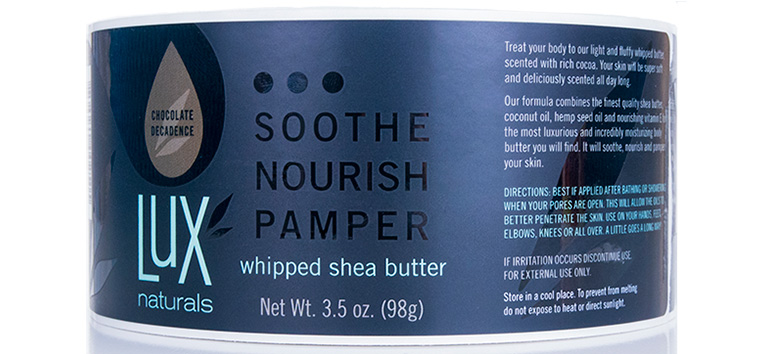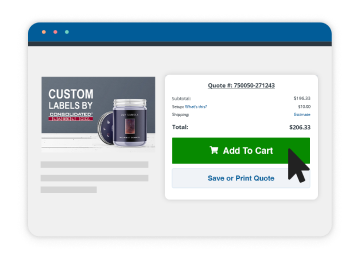What’s the point in creating an awesome label design if the materials aren’t up to par? And, while very important, we’re not just talking about good looks here. Labels can face all sorts of conditions like moisture, abrasion, and light – all of which can deteriorate their quality. That’s why label finishes play an important role in keeping your labels looking good for much longer. Let’s see what types of finishes you can choose so you can select a finish for your labels with confidence. (Want to learn more about stocks and adhesives before you jump into label finishes? Check out our handy materials and adhesives guides!).

Get to Know the Differences
Typically, customers use a finish but there are times where they’ll go without one whether it’s for purely aesthetic purposes or cost savings. Not using a finish on paper labels can create a rustic look because there isn’t any sheen and the texture is rougher. The benefit of using a finish – whether laminate, varnish or UV coating – is that it adds an extra layer of protection to labels, along with visual appeal, either giving the labels a glossy or matte look. Determining which finish (or finishes) to use comes down to your labeling needs and design choices.
Key differences between laminates, varnishes and UV coatings:
- Laminates are a film material that offer a thicker layer of protection making them better suited for labels that will face moisture, abrasion, and light. Gloss, matte, and special durable laminates are available, depending on your specific needs.
- Varnishes are clear liquid coatings that are cheaper than laminates and UV coatings but have the least staying power. Varnishes are available in gloss and matte and can be applied to the entire label (“flood varnish”) or only certain sections of the label (“spot coating”) to create interesting visual effects.
- UV coatings are a special type of varnish that is cured during printing by exposure to ultraviolet light. Although UV coatings typically cost more than other types of varnishes, they also have a longer-lasting quality and super glossy look. UV spot coatings are popular for making certain design elements pop.
Having the Right Finish Matters
It’s important to consider what conditions your labels will face, how long you need your labels to last and how you want your labels to look when choosing your label’s finish. Some finishes are best suited for indoor or outdoor environments, while others work only to achieve a certain appearance. For example, if your labels will face conditions like rain, sunlight and friction, we suggest using a polyester laminate because standard varnishes and laminates aren’t designed to handle the rough conditions that outdoor labels face.
The majority of labels don’t need such a strong finish because they’re going on items that have a shorter lifespan or face much gentler conditions. Self-wound laminates are a popular option for consumer product labels because they’re cost-effective and offer plenty of durability. If you’re looking for a finish with a little more visual appeal, however, a spot UV coating is always a good choice, as it can add an eye-catching element to your label. Spot UV coatings (pictured below) can be used to make certain parts of label design stand out, like accent colors, foil stamps, metallic inks and other artwork elements while also adding dimension with the contrast of gloss and matte finishes.

Whatever your labeling needs, there is a finish that is right for you. Let your dedicated Consolidated Label representative know your label goals so they can help you select the right combination of materials to get the job done. Need some more info before you decide? Check out our video library to see label materials and printing processes in action!


